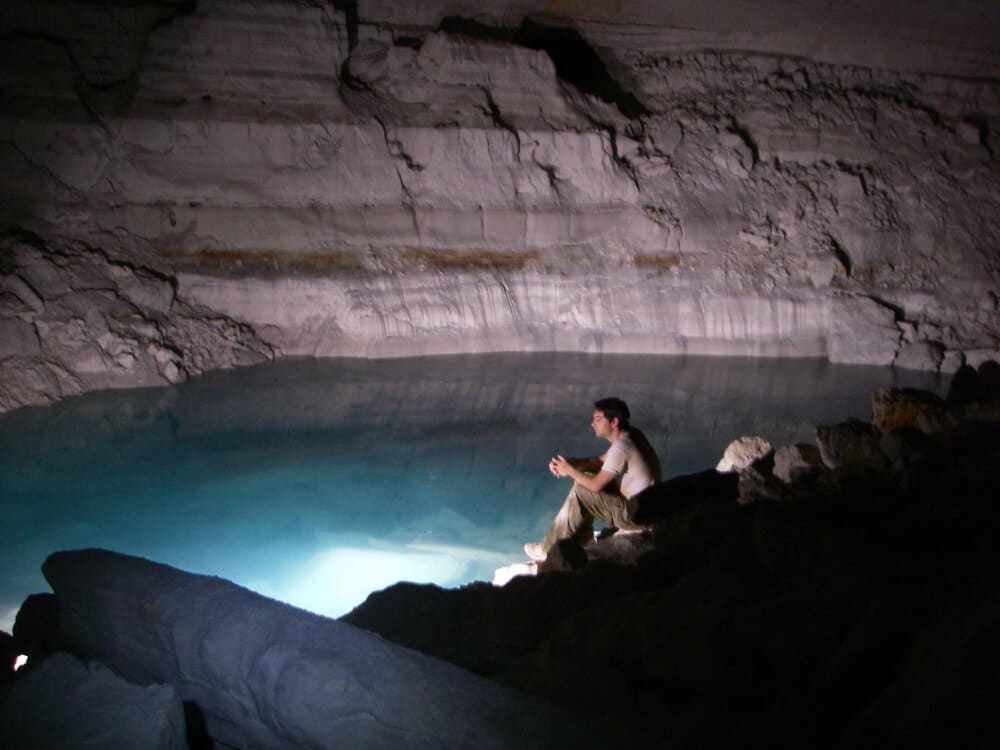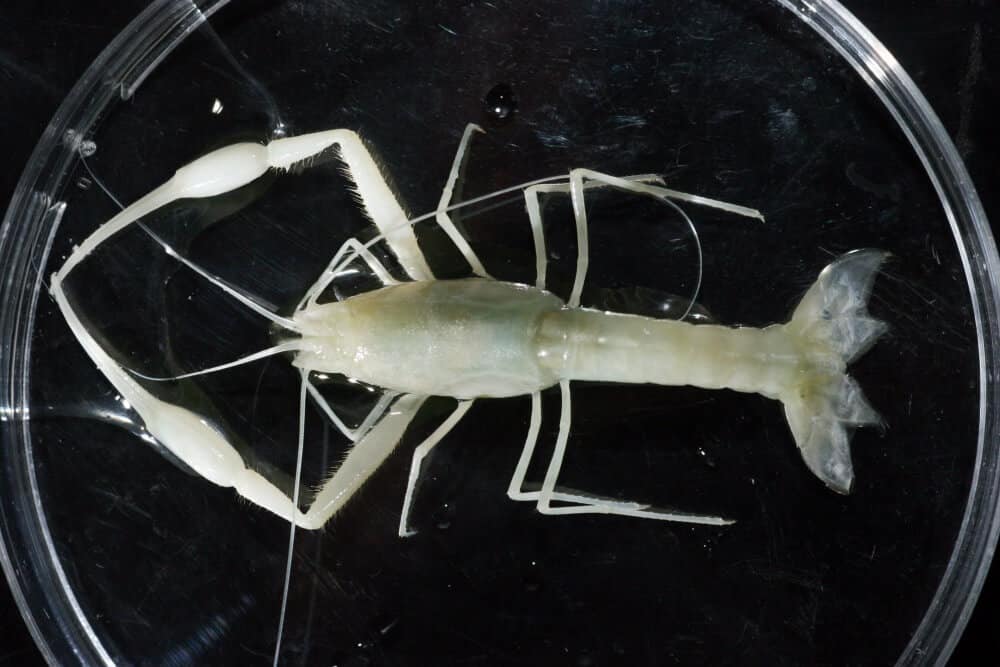The Ayalon Cave, home to unique blind creatures of its kind in the world, is in danger of becoming just another water reservoir. It is important to appeal

Cave explorers occasionally enter a place where no human foot has ever set foot, but the astonishment at the discovery of the Ayalon Cave was above and beyond what was expected. Israel Naaman, a student at the Institute of Earth Sciences at the Hebrew University, suddenly found himself in a huge underground world (2.7 km long) alive and bustling under the surface of the earth. The animals in the cave have since been discovered to be endemic - they do not live anywhere else in the world. The endemicity is especially noticeable in light of finding endemic genera, tribe and family. All species have evolved to exist in dark conditions (they are blind and colorless). There are dozens of articles and reports describing the system well. All species are completely cut off from the energy of sunlight, and utilize only the internal energy in the body of underground water exposed in the cave, which is part of the crocodile jade aquifer, and there is a close connection between them. It became clear during the research that there is no other system in the world that is so disconnected from the surface, and the world of international research began to investigate the phenomenon with us.
On April 16.4.2021, 33, a national infrastructure plan, Tel/XNUMX/A, was published that threatens all of this. The plan is intended to reduce the flow of floods in the Ayalon lanes for the construction of a railway along the canal route. The intention is to flow the floods of Nahal Ayalon into several reservoirs upstream, among them the Nesher Ramla Quarry, in whose area is the Ayalon Cave. But the flow in the upper Ayalon stream that passes by the quarry does not rise to about a third of the flow reaching the Ayalon lanes. Most of the water reaches Nahal Ayalon from Nahal Natuf and other streams that join Nahal Ayalon downstream. Therefore, the benefit of the proposed program is also negligible.
The quarry deepened to penetrate the limestone rock until it reached the ground water surface in years when the water level is high. When the level is low, the water is several meters below the bottom of the quarry, and it is riddled with cracks and caves. This means that the flood water that will flow into the quarry will immediately penetrate the water body of the cave and turn this body into 'normal' water, the kind that flows in floods. Furthermore, pooling and introducing the flood water into the quarry will fill the quarry crater around the cave in blessed years with several million cubic meters of runoff water, the properties of which are completely different from the anomalous water of the aquifer in the Ayalon cave. There is no natural buffer between this water and the aquifer and the cave. The large amount of flood water that will flow in relation to the amount of water in the cave (a difference of four orders of magnitude!) will result in the transformation of the lake water in the cave into flood water quality water. Sealing the quarry, which is expensive, will not last long, and any seepage will destroy the important ecosystem. It goes without saying that in the absence of any filtering of the floodwaters that will flow into the quarry, they may also contaminate the waters of Israel's central aquifer with substances that will accidentally or deliberately arrive from the upstream channels.

There are alternative solutions for managing the flow in Nahal Ayalon. The simplest of them is the construction and upgrading of reservoirs upstream. Indeed, the Ayalon Reservoir between Sha'aliv and Mishmar Ayalon has been performing its function for about sixty years and effectively stops the floods in the upper Ayalon River. The flow of flood water to the Modi'in quarry near Shoham is also included in the plan, as is the pooling of water in Ariel Sharon Park. Prof. Chaim Gebirtzman, a hydrologist at the Institute of Earth Sciences at the Hebrew University, recently stated that these reservoirs along with others upstream of the Ayalon and Yarakon tributaries (which were planned decades ago but have not yet been implemented) will completely solve the problem of flooding in the Ayalon lanes.
If, after all, the flood water is pumped into the Nesher Quarry, this pumping in itself will not solve the problem of flooding in the Ayalon lanes, but the special properties of the cave waters will disappear - especially the sulfur content (hydrogen sulfide) in the water. This substance is the source of energy for the microorganisms, which feed the entire biological system of the cave. The meaning is clear - the elimination of the special biological system of the Ayalon Cave!
This cave, unique in its conditions and in its isolation from the outside environment for such a long time, is a closed ecosystem in which species have evolved that have adapted well to its conditions and will most likely not be able to withstand exposure to outside conditions, including floodwaters that will infiltrate it if the plan is implemented. This uniqueness constitutes a treasure trove of biological diversity that Israel must act to preserve, within the framework of its obligations to the International Convention on Biological Diversity (Convention on Biological Diversity). Among the important criteria for assessing extinction risks are the number of sites where the species lives and the area it inhabits. For many species discovered in the Ayalon Cave, this is the only site where they have ever been found, despite extensive field surveys by experts who also looked for them in nearby caves where the conditions are apparently similar. Therefore, these species have no reserves, they are not found in any other nature reserve in Israel or abroad, they are not raised in zoos or laboratories and therefore their extinction from the Ayalon Cave means their extinction from the entire world, with no future way to bring them back.
Prof. Ariel Chipman, Head of the Department of Life Sciences at the Hebrew University, estimates that the flow of flood water into the quarry will certainly lead to the destruction of the cave's unique ecosystem, which includes arthropods that exist only in it. According to him, changing the chemical composition of the water will collapse the food web in the cave based exclusively on the activity of quasi-autotrophic bacteria (bacteria that use the sulfur in the water to create energy, instead of sunlight).
In the Ayalon cave, which is completely cut off from the ground, the system is cut off from the outside world. Organic material from the ground does not reach the cave, neither light nor food. A closed system, millions of years old, was created there, which is based on energy produced in a chemical process in which bacteria break down sulfur and create energy in this process. This is how it creates a unique chain, in which tiny crabs feed on the sulfur-decomposing bacteria, when in turn they are eaten by larger creatures, the largest of which living in the cave's water is the Sumit Ayalon species, an impressive long-bellied crab, whose ancestors once lived in the Mediterranean Sea and became extinct from there.
Ayalon Cave is the only one in the world known to us in the composition of the species living in it and among the few in the world in which an independent system is known that is completely disconnected from the "outside world", and is based on such a unique independent energy system. The ecosystem in the cave includes two food chains, one in the water and one in the area outside the water. At the head of the terrestrial system in the cave is a scorpion ('Soma Israhanani scorpion' in its scientific name), whose relatives have not been found at all in Israel or in the world, and therefore it has been defined as a new family - Akravidae, an extremely rare discovery. He and his friends entered the cave probably when the climate in the country was hot and humid, during the Miocene period. In the millions of years that have passed since then, the relatives of the family on the surface and in the sea became extinct due to the natural environmental changes, while those who managed to penetrate the cave and adapt to the darkness and its unique food source - have survived to this day.
This system has survived for millions of years, as evidenced in recently published scientific papers. Until we arrived, the humans, who claim to change the order of Genesis. We did this to nature for the first time by drying up the Hula Lake. We all suffer from the devastating results to this day. This must not be allowed to happen again, and it may happen!
To submit an objection to the plan, go to: http://bit.ly/3clDhvl.
* The author is Amos Fromkin, a professor at the Institute of Earth Sciences at the Hebrew University, who heads the Center for Cave Research in Israel (Malham). The article was published on the Hebrew University website
More of the topic in Hayadan:
